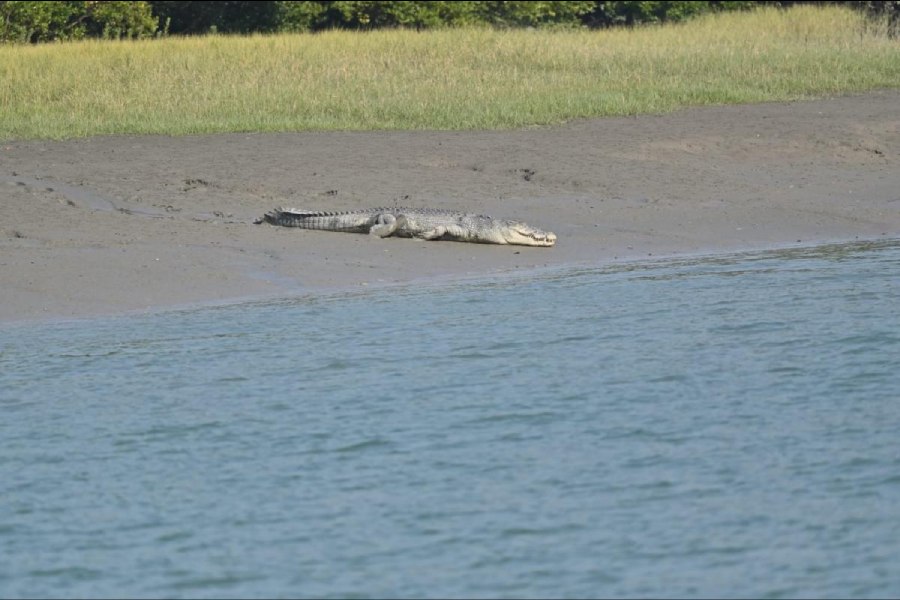The world’s largest mangrove delta is home to at least 204 of the largest living reptiles in the world.
An exercise to estimate the population of the estuarine, or saltwater, crocodile (Crocodylus porosus), the top aquatic predator in the Sunderbans, started in January this year.
The count has estimated a population between 204 and 234, said a forest official who has seen the report that is expected to be published soon.
The survey is taking place after 12 years. The last one, in 2012, had estimated around 140 crocodiles, the official said.
“There have been 168 physical sightings (of the estuarine crocodile) in the Sundarban Biosphere Reserve during the survey. The estimated population of the saltwater crocodile is between 204 and 234. This is an assessment of the population trend, not the exact number,” a forest department official said.
Unlike the tiger census, where images captured by cameras are fed into a software that uses statistical tools to estimate the population, the crocodile population estimate is done on the basis of physical sightings, sign surveys and an assessment of the habitat.
On four days in January, small teams on boats scanned around 900km of riverbanks and creeks of the Sunderbans for physical sightings.
Fourteen teams were deployed for the Sunderbans Tiger Reserve (STR) and eight for the South 24-Parganas forest division. Each team had forest department personnel as well as representatives of local wildlife NGOs. Each boat covered around 40km in two days.
The Sajnekhali and Basirhat ranges of the STR and the Matla range of the South 24-Parganas division were covered on January 17 and 20. The National Park East and National Park West of the STR and the Raidighi and Ramganga ranges of the South 24-Parganas division were covered on January 20 and 21.
The physical sightings led the team conducting the census to a basic index of the number of crocodiles per kilometre in each habitat. That data was then extrapolated to the larger Sunderbans habitat, which is spread over 4,000sqkm on the Indian side.
The survey took into account juveniles and adults, another official said. Hatchlings were left out. There is little chance of a crocodile being counted twice because, like tigers, crocodiles are also very territorial, he said.
A section of officials said the estimate was “lower than expected”.
“The conditions were overcast on some of the days of the physical survey. The inclement weather meant the base number (physical sightings) was on the lower side. If the base number is low, the estimated population will invariably be on the lower side,” he said.
The estuarine crocodile is found in eastern India, southeast Asia and northern Australia.
There have been instances of males growing up to 20ft and weighing over 1,000kg.
“In the Sunderbans, the average length of an estuarine crocodile is around 12ft. Residents and our teams have in the past seen a male grow up to 15ft,” said a retired forest official who has spent many years in the mangrove delta.
“Apart from their size, their high tolerance for salinity separates saltwater crocodiles from their cousins like gharials, muggers and caimans,” he said.











